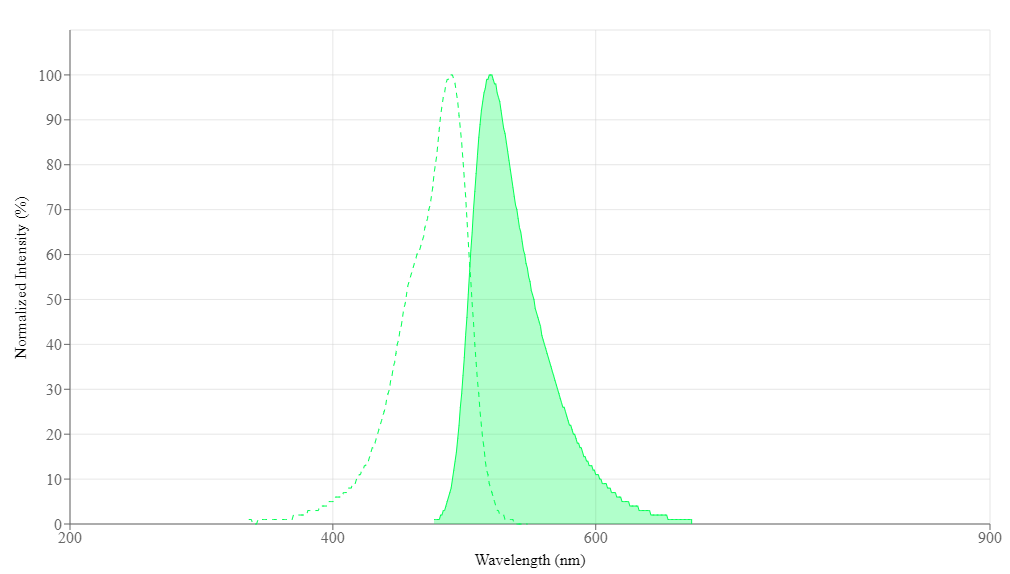Acridine orange
Acridine Orange is a cell-permeable nucleic acid stain that exhibits differential fluorescence—green for double-stranded DNA and red for RNA or single-stranded DNA—enabling simultaneous visualization of different nucleic acid types in live and fixed cells.
- Differential Nucleic Acid Staining: Green fluorescence (490/520 nm) for dsDNA via intercalation, red fluorescence (460/640 nm) for RNA/ssDNA
- Cell-Permeable Metachromatic Dye: Accumulates in acidic compartments including lysosomes at low pH
- Weakly Basic Character: Neutral charge facilitates membrane diffusion for live cell imaging
- Dual-Color Cell Viability: Combined with PI for simultaneous live/dead cell discrimination


| Catalog | Size | Price | Quantity |
|---|---|---|---|
| 17502 | 100 mg | Price |
Physical properties
| Molecular weight | 301.82 |
| Solvent | Water |
Spectral properties
| Absorbance (nm) | 487 |
| Extinction coefficient (cm -1 M -1) | 27000 |
| Excitation (nm) | 490 |
| Emission (nm) | 520 |
Storage, safety and handling
| H-phrase | H303, H313, H340 |
| Hazard symbol | T |
| Intended use | Research Use Only (RUO) |
| R-phrase | R20, R21, R68 |
| Storage | Freeze (< -15 °C); Minimize light exposure |
| UNSPSC | 41116134 |
| CAS | 65-61-2 |
Contact us
| Telephone | |
| Fax | |
| sales@aatbio.com | |
| International | See distributors |
| Bulk request | Inquire |
| Custom size | Inquire |
| Technical Support | Contact us |
| Request quotation | Request |
| Purchase order | Send to sales@aatbio.com |
| Shipping | Standard overnight for United States, inquire for international |
Page updated on November 4, 2025

